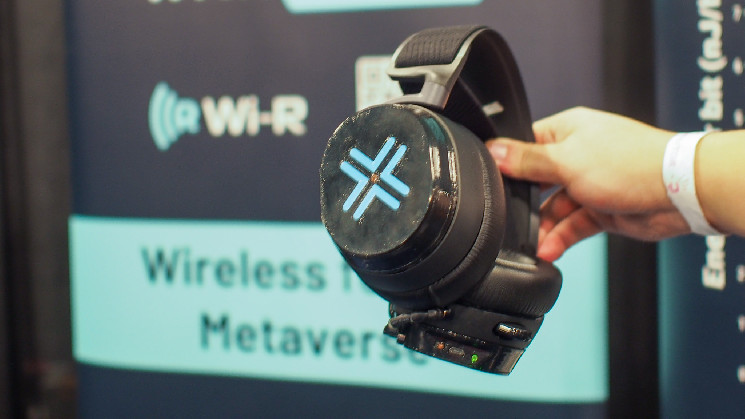LAS VEGAS — To bring the metaverse to everyday life, it’s going to require something sleeker than today’s virtual reality (VR) headsets. While the dream is for devices that resemble normal-looking glasses to power an always-on digital experience, the harsh reality is that power-hungry processors and chunky batteries require either extra bulk or compromised features.
Ixana, a relatively new company, believes it has found a way to build a new generation of personal devices that are much more power efficient than the headsets of today, and at CES 2023 it’s unveiling a developer platform so others can start building applications for its tech. The core of Ixana’s innovation is a new way to transmit information: through the human body itself.
Well, not the body exactly, but the electromagnetic field surrounding it. Ixana’s technology, called Wi-R, makes use of the body’s natural ability as a conductor. A device either held or worn can transmit data over this field incredibly efficiently — Ixana claims it uses a hundredth of energy typically used in conventional wireless connections like WiFi or Bluetooth.
The metaverse is an immersive digital world created by the combination of virtual reality, augmented reality (AR) and the internet.
The idea is that you could have the smartphone in your pocket — which already has a hefty battery and performant processor — powering the headset on your face, transmitting all the data across the surface of your body, and you wouldn’t feel a thing. According to Ixana, Wi-R tech is capable of pushing four compressed HD video streams simultaneously.
“Everybody is trying to cram the computing in [VR glasses],” says Shreyas Sen, co-founder and CTO of Ixana. “And it takes a huge amount of power, so it looks big. In the future we imagine you will have technology all around you that gives you similar capability in a distributed network around your body. ”
CoinDesk tried out the Wi-R tech at CES. We put on a pair of headphones that had a Wi-R chip, and when we moved our hand closer to a special cellphone, we could clearly hear music playing from the phone. The music stops when you move your hand away, which doesn’t seem impressive until you realize that neither the phone case nor the headphones are connected via any kind of wireless connection — the data was transmitted entirely through the electromagnetic field of the human body.
Ixana wants you to imagine that type of connection carrying video, VR, AR and more. Think of everything from your smartwatch to your sunglasses all continuously talking to each other without ever using a radio. This video shows the idea in some fanciful scenarios.
There are certain issues Wi-R tech can’t solve. The bulk associated with some wearable technology isn’t just because of batteries and processors: screens and haptics demand lots of energy, and you can’t just put the battery somewhere else on your body. All the security and safety implications of transmitting data through a body need to be thought through, too. There’s a never-ending debate around whether cellphone radiation is harmful — if Wi-R ever catches on, it’s sure to spark its own skeptics.
Sen is realistic about the hurdles ahead, conservatively suggesting that it will be 2-4 years before the tech ever appears in a consumer device, and about 4-5 years for smartphones to adopt it. Again, if it catches on at all.
But the release of the $999 developer kit brings it forward from just a proof of concept, and Sen says the company has backing from some major players, including Samsung. With wide adoption of Wi-R, the future of metaverse might look a lot different from today, and the idea of building powerful augmented-reality eyeglasses — long a dream of the tech industry — might finally start to come into focus.
 coindesk.com
coindesk.com
